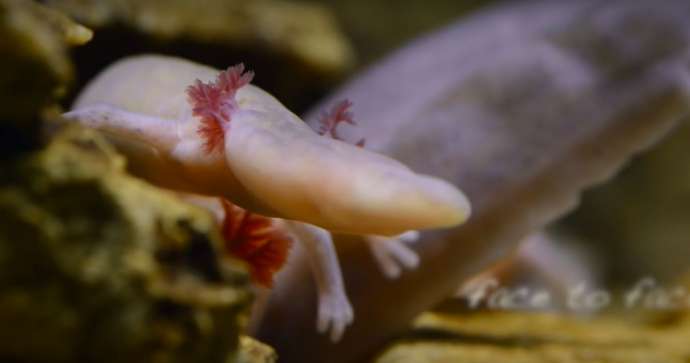STA, 25 November 2019 - Slovenian scientists have decoded the genome of the olm, an endemic cave-dwelling aquatic salamander, based on which new possibilities could be developed in healthcare, for example to heal wounds, understand the causes of obesity and treat diabetes, a press conference heard in Ljubljana on Monday.
The discovery of the genome of the animal found in the karst caves of the Western Balkans, including southern Slovenia, has been made in cooperation with the Danish researchers and the Chinese institute BGI Research.
The olm or proteus, nicknamed the "human fish", is interesting to scientists from the genetic perspective as it can live up to 100 years, and is able to survive long periods without food or overeating without damage to its organs.
12 Things to Know about the Olm, Proteus, Human Fish & Baby Dragon
It also has exceptional capabilities of regeneration, as it is able to regrow an amputated limb, which could be recently witnessed by visitors to the Postojna Cave in Slovenia.
The project to determine its genome was launched last March at the University of Ljubljana together with researchers of Aarhus University in Denmark and BGI Research. Tissue from two olms were sampled, frozen and sent to China.
Duncan Yu, the director of MGI, a subsidiary of BGI Research, told the press that determining the genome had been a complex task requiring a combination of state-of-the-art technologies, as it was 15 times larger than the human genome.
More than a trillion nucleotides, the basic building blocks of DNA and RNA, have been determined, and each of them have been read 160 times on average, with the information obtained now being merged into the final genome sequence.
Yu handed over today a recording of the genome sequence, which bears 42 Megabytes of information, to Igor Papič, chancellor of the University of Ljubljana.
The decoding of the genome is expected to make it easier for scientists to understand how the olm manages to survive years without food or to overeat without any negative effects on the organism.
According to Rok Kostanjšek of the Ljubljana Biotechnical Faculty, who heads the project in Slovenia, it will be easier to understand metabolic processes and apply the findings in human medicine.
In humans, fasting triggers insulin resistance, which leads to diabetes, while this does not happen in the olm, he said, adding that the findings could perhaps be used to improve diabetes medications.
The understanding of the olm's ability to regrow an amputated limb will probably not lead to this being possible in humans, but it could lead to new findings in the treatment of wounds and shorten hospital care after surgeries.
Kostanjšek added that the insight into the genome would also provide scientists with a new basis for discovering or understanding mechanisms related to longevity and genetic diversity.
Analyses of the genome could also be used to determine the sex of an individual olm, which is important for the preservation of this endangered species, as their mating could be facilitated under controlled conditions.
The information could furthermore be used to find out how many populations of the olm exist in a certain area, which would speak about the stability of these populations.






